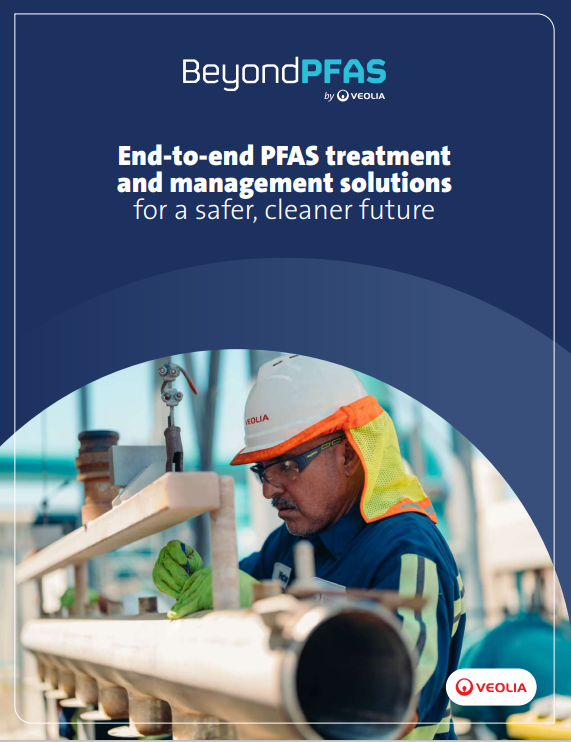PFAS are poly- and perfluoroalkyl substances strongly resistant to degradation. Because of their wide use and the fact that they degrade slowly, PFAS are found almost everywhere in the environment, and certain types have been linked to health problems in humans and animals. For that reason, the EPA is exploring classifying some PFAS compounds as hazardous substances.
What’s the issue with PFAS?
According to the CDC, a large number of studies have examined possible relationships between exposure to certain PFAS and the presence of PFAS in blood and harmful health results in humans. These ill health effects may include:
- Increased cholesterol levels
- Changes in liver enzymes
- Decreases in infant birth weights
- Decreased vaccine response in children
- Increased risk of high blood pressure
- Greater risk of kidney or testicular cancer
Although the study of negative health effects linked to PFAS is still in its early stages, there is enough evidence to potentially label certain types of them as hazardous substances under the Comprehensive Environmental Response, Compensation, and Liability Act (CERCLA).
Where PFAS are found
PFAS are man-made chemicals that have been used in consumer and industrial products around the world since the 1950s. They have thousands of uses and can be found in food containers, non-stick cookware, fabric softener, fire fighting products, water resistant clothing, cleaning products, personal care products, cosmetics, and more.
Human exposure to PFAS can take several forms, including inhalation, ingestion, and skin absorption pathways. The primary ways people come into contact with PFAS are through contaminated drinking water, eating fish from contaminated water, swallowing or inhaling contaminated soil or dust, eating food from packaging that contains PFAS, and using consumer products that utilize PFAS.
The current regulatory situation
The majority of people do not know what PFAS are or the harmful effects they potentially cause. However, there is an increasing awareness of them, especially with the EPA looking into new regulations. Currently, these chemicals are not directly regulated by the EPA nationally, but some states are passing their own PFAS rules, specifically when it comes to drinking water standards.
The Clean Water Act does lay down some regulations when it comes to PFAS in water. This act established the National Pollutant Discharge Elimination System (NPDES), which includes pre-treatment and effluent limitation guidelines, as well ambient water quality criteria as part of the permit process. These guidelines often apply to manufacturers, formulators, and metal plating facilities that manufacture or use PFAS chemicals that may be harmful to human health or aquatic life. Future regulations are expected that will apply to wastewater treatment facilities.
When it comes to drinking water, the EPA has also released health advisories for four PFAS chemicals. In 2022, they revised the levels of PFOA and PFOS at which there may be an elevated risk of negative health effects. The June 2022 interim levels are much lower than the previous Health Advisory Level of 70 parts per trillion, at 0.004 parts per trillion for PFOA and 0.02 parts per trillion for PFOS. Human studies have found associations between PFOA and/or PFOS exposure and effects on the immune system, the cardiovascular system, development (e.g., decreased birth weight), and cancer.
For these reasons, the EPA is also currently working to designate PFOA, PFOS, PFBS, and GenX PFAS chemicals as hazardous constituents under the Resource Conservation and Recovery Act (RCRA) and PFOA and PFOS as hazardous substances under the Comprehensive Environmental Response, Compensation and Liability Act (CERCLA). This new classification would add these compounds to RCRA corrective action requirements and make responsible parties strictly liable for the remediation and recovery efforts for PFAS contaminated sites. This move would lay the foundation to designate these specific PFAS chemicals as hazardous waste.
If PFAS chemicals are classified as hazardous under RCRA and/or CERCLA, then industries ranging from manufacturers and wastewater utilities to waste management, airports, and brownfield property owners could be affected.
What’s the solution looking forward?
Whether the EPA classifies certain PFAS chemicals as hazardous or not, the best solution for managing their harmful effects is to remove them from the environment whenever possible.
- Because they are not currently regulated as hazardous waste, PFAS can be legally placed in a deep well, solid waste landfills and hazardous waste landfills, or combusted at a waste to energy plant, cement kiln, or hazardous waste incinerator except where limited by state laws
- Water management systems for municipalities and private companies that include various treatment technologies to capture PFAS
- High temperature incineration technology to manage the media contaminated with PFAS
A sustainable next step
While Veolia does not offer services to landfill or deep well PFAS materials, we can properly dispose of waste containing PFAS using incineration, whether it is classified as hazardous or not. In addition, we are using available technologies to design water and wastewater systems that will treat PFOA and PFOS. If you have questions about how to deal with PFAS or the new regulations, please reach out to our team today.
If you have questions about how to deal with PFAS or the new regulations, please reach out to our team today.
The information contained herein is based on the Veolia group's understanding and know-how of the scientific, regulatory and technical fields discussed herein as of the time of publication. No contractual undertaking or offer is made on the basis hereof and no representation or warranty is given as to the accuracy, completeness or suitability for the purpose of the relevant information.


